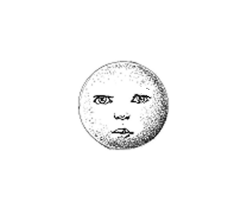
Tim Bollands recently tweeted his short solution to the Hard Problem (I mean, not literally in a tweet – it’s not that short). You might think that was enough to be going on with, but he also provides an argument for a pretty uncompromising kind of panpsychism. I have to applaud his boldness and ingenuity, but unfortunately I part ways with his argument pretty early on. The original tweet is here.
Bollands’ starting premise is that it’s ‘intuitively clear that combining any two non-conscious material objects results in another non-conscious object’. Not really. Combining a non-conscious Victorian lady and a non-conscious bottle of smelling salts might easily produce a conscious being. More seriously, I think most materialists would assume that conscious human beings can be put together by the gradual addition of neural tissue to a foetus that attains consciousness by a similarly gradual process, from dim sensations to complex self-aware thought. It’s not clear to me that that is intuitively untenable, though you could certainly say that the details are currently mysterious.
Bollands believes there are three conclusions we can draw: humans are not conscious; consciousness miraculously emerges, or consciousness is already present in the matter brains are made from. The first, he says, is evidently false (remember that); the second is impossible, given that putting unconscious stuff together can’t produce consciousness; so the third must be true.
That points to some variety of panpsychism, and in fact Bollands goes boldly for the extreme version which attributes to individual particles the same kind of consciousness we have as human beings. In fact, your consciousness is really the consciousness of a single particle within you, which due to the complex processing of the body has come to think of itself as the consciousness of the whole.
I can’t recall any other panpsychist who has been willing to push fully-developed human consciousness right down to the level of elementary particles. I believe most either think consciousness starts somewhere above that level, or suppose that particles have only the dimmest imaginable spark of awareness. Taking this extreme position raises very difficult questions. Which particle is my conscious one? Or all they all being conscious in parallel? Why doesn’t my consciousness feel like the consciousness of a particle? How could all the complex content of my current conscious state be held by a single invariant particle? And why do my particles cease to be conscious when my body is dead, or stunned? You may notice, incidentally, that Bollands’ conclusion seems to be that human beings as such are not, in fact, conscious, contradicting what he said earlier.
Brevity is perhaps the problem here; I don’t think Bollands has enough space to make his answers clear, let alone plausible. Nor is it really clear how all this solves the Hard Problem. Bollands reckons the Hard Problem is analogous to the Combination Problem for panpsychism, which he has solved by denying that any combination occurs (though his particles still somehow benefit from the senses and cognitive apparatus of the whole body). But the Hard Problem isn’t about how particles or nerves come together to create experience, it’s about how phenomenal experience can possibly arise from anything merely physical. That is, to put it no higher, at least as difficult to imagine for a single particle as for a large complex organism.
So I’m not convinced – but I’d welcome more contributions to the debate as bold as this one.
